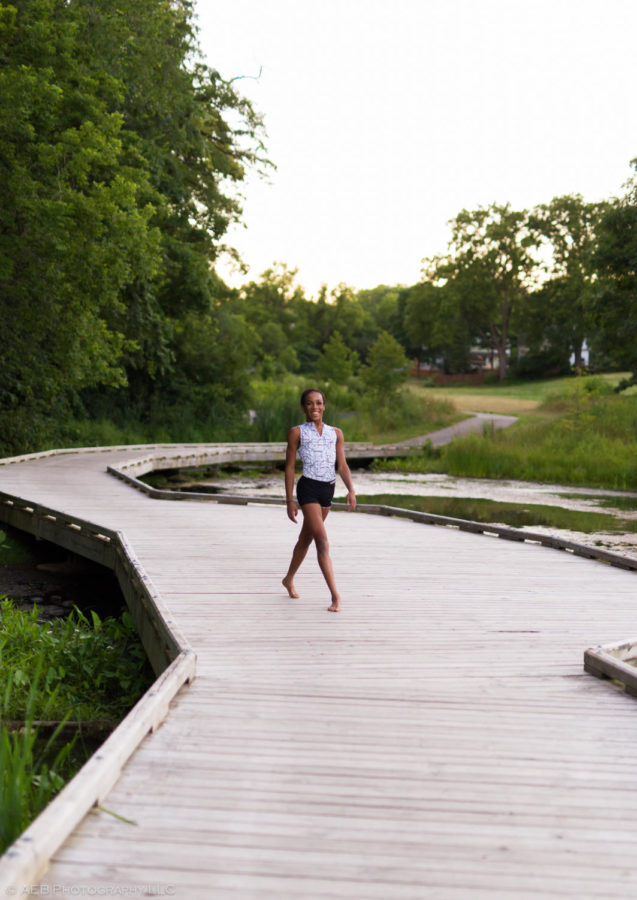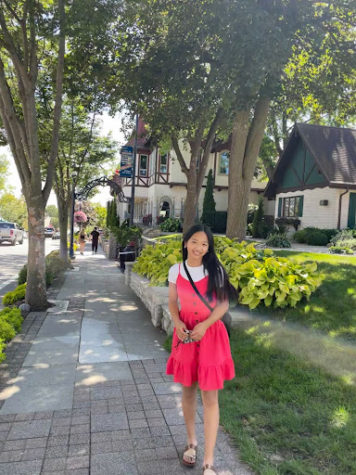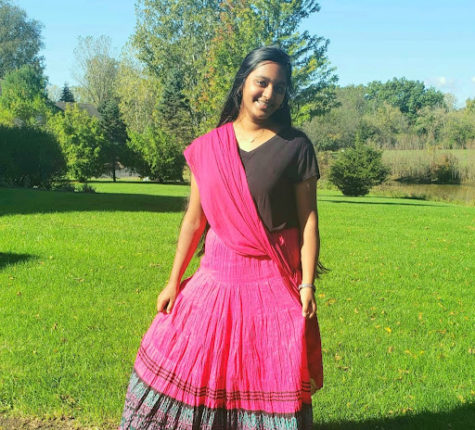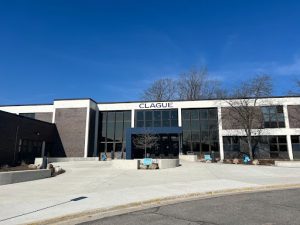Kaea Prescott: A Black and Trans Dancer Living in the Midst of a Global Pandemic
“Dance was always like a second home for me,” 22-year-old dancer Kaea Prescott said.
February 5, 2022
“Dance has always been a safe and beautiful space for me.”
Clague Middle School alumnus Kaea Prescott lives and breathes dance. As a 22-year-old professional dancer and dance teacher at the Ann Arbor Dance Classics, AADC, her life has been centered around dance for as long as she can remember. Her love and passion for it have become her sole motivation to become a dancer as an occupation. Later on, due to COVID, she returned to her childhood studio to become a dance teacher, inspiring her students and bringing up a whole new generation of dancers.
Through her extensive dance career, she’s faced numerous ups and downs. Most notably surviving through a devastating global pandemic, her journey being queer, then transgender, and the ever present racism deep-rooted in the foundation of dance.
Her journey with dance started early on in her life, at the young age of three.
“My fathers at the young age of three put me in dance and I fell in love with it; both as a physical outlet to get all of my energy out, and also as an expressive outlet,” Prescott said. “Dance was always like a second home for me.”
Dance wasn’t just an extracurricular activity for Prescott. Later on, after high school graduation, Prescott decided to join a professional dance company in New York City to pursue her passions on another next level.
“After graduating in 2018, I moved to New York City and started training at a facility called the Broadway Dance Center, just trying to make it in the world as a dancer,” Prescott said.
Just two years after Prescott began her dance career in the renowned city of New York City, she was forced to uproot her dreams and career and move back to her hometown due to the widespread pandemic.
“In March of 2020, I moved back home due to COVID circumstances, just because I didn’t really know what was going to happen. I don’t regret it,” she said
Fortunately for Prescott, she was able to continue her love for dance through a different method, and from that, found another passion of hers: teaching.
“Before moving back to Ann Arbor, I didn’t think I was going to be a teacher for many, many years,” Prescott explains. “Even though I have been dancing for so many years, I couldn’t see myself as a leader or the fact that I didn’t go to college. I always thought teaching would be after I got a degree, after I settled, and after I couldn’t dance anymore.”
As Prescott weighs the pros and cons of the situation, she even goes as far as thanking COVID for this whole new part of her life.
“It’s actually one of the greatest things that came out of COVID, because I love it,” Prescott revealed. I wouldn’t be teaching this young had I not moved home this young. I wasn’t planning on it for a long time, but I’m glad to be doing it.”
While COVID brought new experiences to Prescott’s life, she definitely also faced numerous struggles. Her social life in New York City suffered now that she’s been in Ann Arbor for almost two years teaching.
“Moving back to my hometown in my early twenties at that college phase, the time where people are trying to branch away from home, make new friends, and connections really affected me,” Prescott explains. “The New York City part of me is being halted, it’s more the things I know and the people I know right now. While that’s fine, and I’m glad for the chance to teach dance, it’s also good to break out of it and see new parts of the world.”
“I have been back ever since, I’m teaching now at my old studio,” she concluded. “I’ve been teaching five days a week, and loving that; glad to be back in this beautiful, safe, and clean city.”
Prescott has not only been affected by COVID, but she has also been affected by stereotypes.
“A perfect example would be the Nutcracker: Chinese tea. A few years ago, at a different ballet studio, the girls were doing pancake powder makeup to imitate the look of someone who’s “Asian.” For my year, they didn’t do it because it was really dramatic. This kind of thing happens nationally, with the Nutcracker especially, when they start bringing all these corners of the world, they start to stereotype a lot of things.”
These accusations have been made by countless other professional POC dancers, pointing out the exaggerated stereotypes depicted in the second act of the Nutcracker, The Land of Sweets.
“I would say this type of thing happens significantly more often in classical and older styles. A lot of the more problematic stuff happens in ballet just because the “oldness” of it is being carried over. Hip-hop, on the other hand, is new and evolving, especially by the Black community.”
She reflects on other, more broad experiences dealing with her race in a white dominated field.
“I’ve been in classes and camps where I’ve been one of the few kids of color in the room, but also that’s just being a POC, something that you have to grow up with getting accustomed to.”
Prescott is also a dancer part of the LGBTQ+ community.
“I was raised by gay parents, so I always had a pretty open dialogue and mindset about the LGBTQ+ community,” she said. “I’m sure I was put into two different categories by some people and people have had their opinions on me, but I came from a loving and supportive home, so it wasn’t a fight for me growing up.”
While it is evident that racism and transphobia lingers in America, Prescott was fortunate to have been raised in such a diverse environment, and later moved to another city that shared the same ideals. Ann Arbor, Michigan is ranked as one the most diverse cities in Michigan. In New York City, fifty percent of the population is made up of people of color, according to the 2020 US Census.
“I’m glad that I was raised in a safe, open, and mulitracial community, so it wasn’t like I had that many hardships in that area,” she said. “Living in New York is kind of similar in that it’s a rainbow full of people.”
Prescott has such a unique experience with dance. Born and raised in a small town in Michigan to the grandiose city of New York City, Prescott managed to enter the dance world successfully as a POC and transgender woman. Surviving through a pandemic while continuing to dance, she’s a real inspiration to all with a passion for dance.
“Dance is so beautiful because it’s also been just such a safe space for being a young, black queer dancer, who’s now an older, black, transgender dancer, because it has no words: expression is through your emotion and movement,” Prescott expressed. “I hope that’s what dance is for a lot of people. I hope dance is and continues to be a safe space.”








